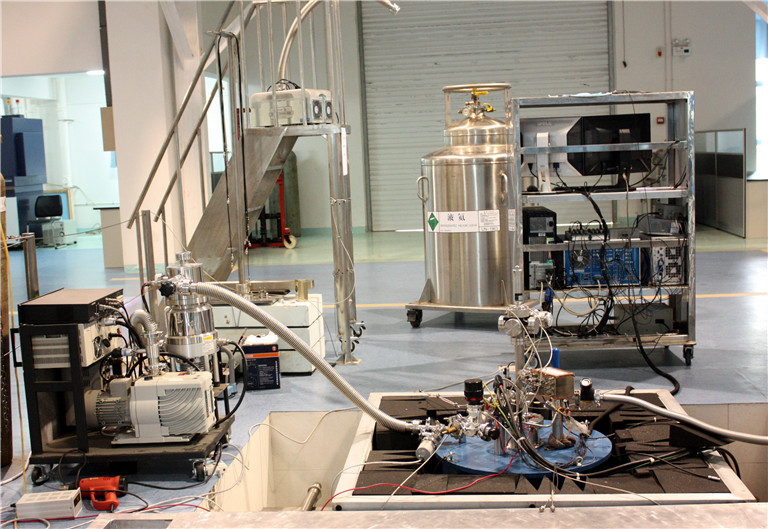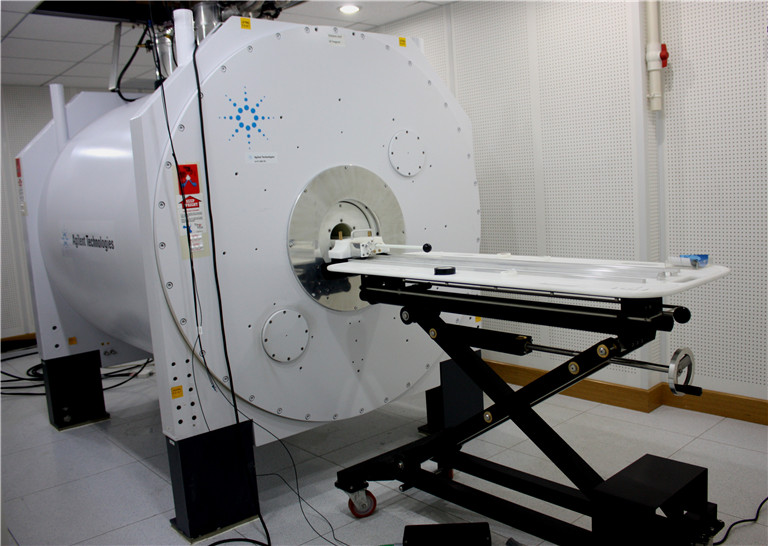- Facilities at a Glance
- All Facilities
- Material
- Earth System and Environment
- Engineering Technology
- Space and Astronomy
- Particle and Nuclear Physics
- Energy
- Biology
- 1
- 2
- 3
Steady High Magnetic Field Facility (SHMFF)
Create Proposal The High Magnetic Field Laboratory of the Chinese Academy of Sciences (CHMFL) was established in May, 2008.SHMFF has been put into operation and commissioned for user service.
It builds the world’s second highest hybrid magnet at 40-telsa level, three water-cooled magnets that set world records and world’s only scanning tunneling microscope system usable in water-cooled magnets, and it establishes world-leading synergetic extreme experimental conditions (high magnetic field, ultra high pressure and low temperature).
The world-record-holding water-cooled DC magnets of 38.5T/Φ32 and 35T/Φ50 are available for experiments. Experimental instruments coupled to the magnets, such as transport measurements, magnetic measurements, condensed matter NMR, high field ESR, combinational microscopes (STM & AFM & MFM) are in operation and ready to accept proposals from users.
Five NMR facilities, including a water-cooled DC magnet of 1.066GHz/25T/Φ50 and a high field (9.4T), wide bore (Φ400) MRI facility are also in operation. A hybrid magnet (with a superconducting magnet in the outer set and a water-cooled resistive magnet inside) produce steady field of 40T/Φ32 is also in operation.
The steady high magnetic field facility is a strong support for frontier scientific exploration, including physics, material science, chemistry, life sciences etc. It has produced fruitful results that have international influences. It not only becomes a core foundation of Hefei Science Center, Chinese Academy of Sciences, but also a key foundation for the construction of Hefei National Science Center. It has become an important part of the China’s innovation system of science and technology.
CHMFL offers scientific researchers access to unique equipments housed in state-of-the-art facilities, and onsite experts to help visiting researchers take advantage of and make best use of the capabilities. Researchers also have the opportunity to collaborate with our experienced scientists and engineers who could be help in advance your scientific research. The team includes more than 20 PIs and about 200 staffs and graduate students.
Equipment
-
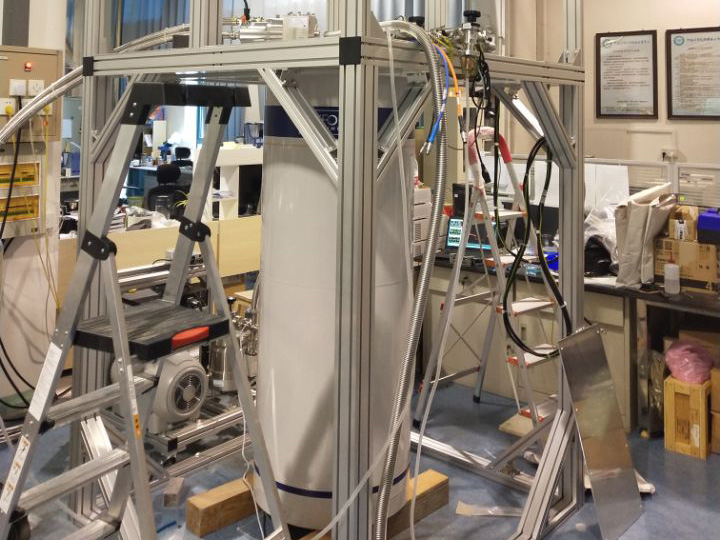
16 Tesla condensed matter NMR
The system can supply condensed matter NMR measurements with the magnetic field up to 16 Tesla, temperature down to 1.8 K (VTI) and 0.3 K (He3). The NMR frequency ranges from 5 MHz to 800 MHz, with a maximum 300W pulsed power.
-
SM2(18T, SMA)
This system includes an 18/20T superconducting magnet (No.: SM2) with a combined microscopy system (SMA) of a Scanning Tunneling Microscope (STM), a Magnetic Force Microscope (MFM), and an Atomic Force Microscope (AFM); a 12T superconducting magnet with a Rotatable Magnetic Force Microscope (ROT-MFM) and a 12T cryogen-free superconducting magnet with a STM and a MFM. In addition, a high - throughput high temperature furnace that can synthesize samples in a high magnetic field can also work with the SM2 superconducting magnet.
The STM, MFM and AFM are housed in a single scan head, which is placed at the center of the superconducting magnet (SM2). For SPM measurements, a magnetic field up to 18/20 T can be applied (to achieve 20 T we need to pump the liquid helium in the dewar down to its lambda point) and the attainable temperature range is 5-300 K. The biggest advantage of the SPM combo is that we can image the same sample with different tips, which are mounted in the same scan head, depending on the properties we want to measure. In details, the STM can be used to probe the electronic structure, while the MFM can image the magnetic domains, and the AFM can image the topography of the samples.
The MFM body of the ROT-MFM can be rotated within a range of ±90°, and it is placed in the low-temperature bore of the 12T superconducting magnet. The ROT - MFM can conduct high resolution microscopic imaging research on samples under the regulation of magnetic field strength (0-12T), magnetic field direction, and temperature (5-300K). The STM and MFM under the 12T cryogen-free superconducting magnet can also conduct high resolution microscopic imaging research on samples under the high magnetic field strength and low temperature.
The above scanning probe microscopes are particularly suitable for high-resolution imaging characterization of materials such as single crystals, low-dimensional and magnetic materials, as well as nanostructures with appropriate dispersion density under the regulation of magnetic field and temperature.
The combination of the high-throughput high-temperature furnace and the 18/20T superconducting magnet can be used for high-temperature preparation of up to 30 samples at one time within a high magnetic field range of 0 to 18T (preparation temperature: room temperature to 600°C).
Key parameters:
Spatial resolution of MFM: 50 nm
Force gradient of MFM: 5x10-4N/m
Vacuum at room temperature: 10-9 torr
Current resolution of STM: 500 fA
STM and AFM are capable of imaging materials with atomic resolution -
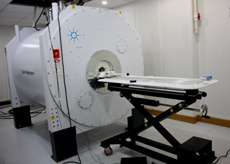
SM4(MRI,9.4T)
The platform includes a 9.4T superconductive MRI scanner and a supporting integrative experimental animal lab. The MRI system has been equipped with 2 gradient coils with inner diameter of 395mm and 120mm respectively, kinds of RF TX/RX coils and also advanced life monitoring and caring devices for various MRI experiments. Based on the system, high quality MRI can be obtained for animals of a large body size range, such as monkeys, dogs, rabbits, cats, rats and mouse etc. Furthermore, the laboratory animal rooms of SPF class enable the MRI experiments of SPF animals to be supportable in long term.
-
WM4(27.5T Φ32 STM)
The water-cooled magnet wm4 has a room temperature aperture of 32mm and provides a maximum 27T magnetic field.
-
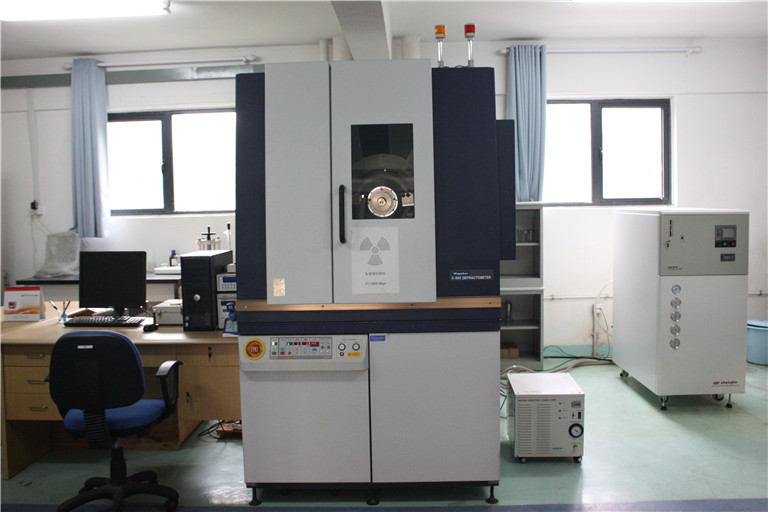
XRD
The max power of the X-ay generator: 18 kW
The scope of the measurement angle (2θ): 0.1°~140°
Limiting angle of resolution: 1/10000°
The temperature range: low temperature 12K~300K, high temperature 300K~1700K -
SM1(6-10T, Φ100mm, Φ100mm)
Superconducting magnet SM1 is a split magnet. It is cryogen free and cooled by two GM cryocoolers. It has two large bores (100 mm in diameter) with corss geometry. Its maximum central magnetic field is 8T. The main usage of this magnet is for synthesis or heat treatment of materials as well as for biological experiments.
-
SM3(NMR,850MHz)
The superconducting magnetic resonance system has the Bruker 850 MHz (20T) spectrometer with 54 mm standard-bore, equipped with 5mm QCI H-P/C/N-D-5-Z CryoProbe. And the probe have automatic tuning and matching capability. The instrument is controlled using a Linux workstation running TopSpin 3.2. It can carry out two-dimensional H-N, H-C and H-P experiments, as well as three resonance experiments, and can be used to obtain information about the structure and dynamics of proteins, and also nucleic acids, and their complexes. Especially, it is a usefull method to study intermolecular interactions.
-
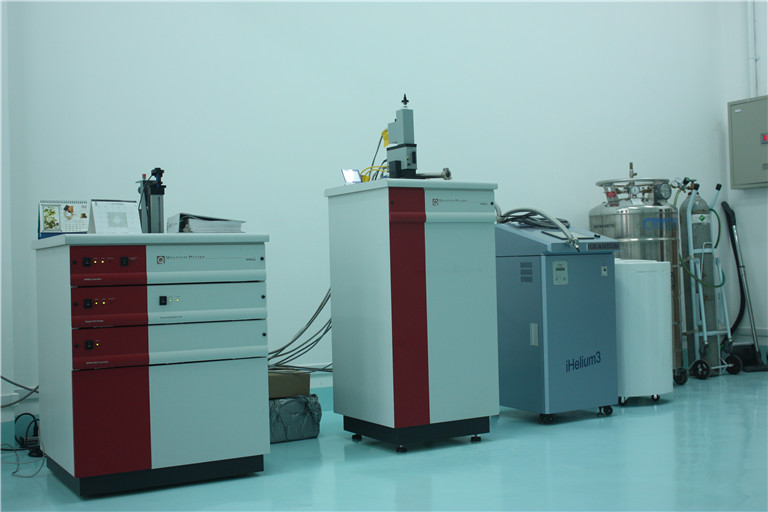
MPMS
The modular MPMS design integrates a Superconductivity QUantum Interference Device (SQUID) detection system, a precision temperature control unit residing in the bore of a high-field superconducting magnet, and a sophisticated computer operating system.
Maximum Sample Size: 9 mm
Field Uniformity: 0.01% over 4 cm
Magnetic field: ± 7.0 Tesla
Temperature Range: 1.9-400 K (800 K with optional oven; 0.5 K with iHelium3)
Capability of the facility:
DC and AC magnetic susceptibility measurement
Magnetization and magnetic hysteresis measurement;
Pressure, angle, or time dependent magnetic measurement
SQUID AC Susceptibility Measurement - 0.1 Hz to 1KHz, sensitivity: 2 x l0-8 emu at 0 T
Ultra-Low Field Capability ±0.05 G
Reciprocating Sample Option (RSO) - DC Magnetization absolute sensitivity: 1 x 10-8 emu @ 2,500 Oe
Continuous Low Temperature Control/Temperature Sweep Mode (CLTC) Sweep rate: 0.001 - 10 K/min.
Horizontal & Vertical Sample Rotators
Extended Dynamic Range (EDR) - expands the full-scale measuring capabilities to ± 300 emu.
Horizontal & Vertical Sample Rotators
Extended Dynamic Range (EDR) - expands the full-scale measuring capabilities to ± 300 emu.
-
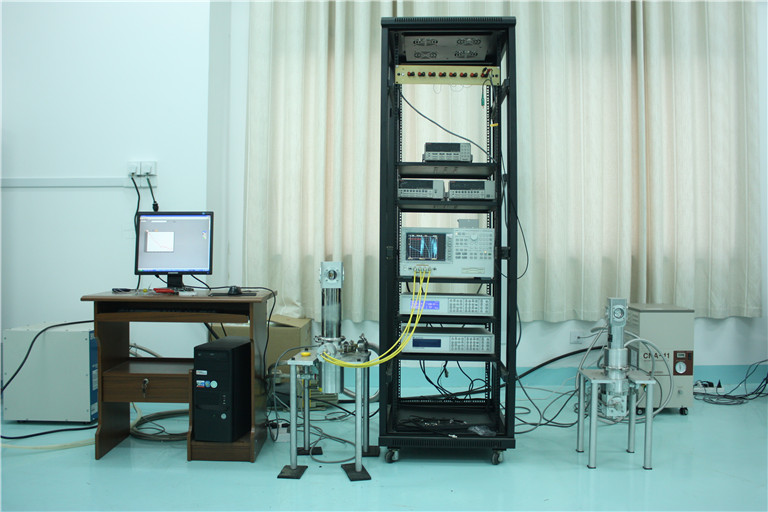
Janis closed-cycle refrigerator
electrical transport properties measurements system, temperature range from 4K to 300K
-
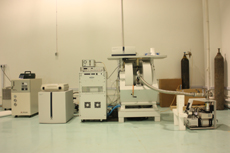
ESR(x-band)
Application:
Electron spin resonance (ESR), also known as electron paramagnetic resonance (EPR),has been one of the ideal analysis methods since its high sensitive, nondestructive and nonintrusive features. It has been used in a wide range of areas such as physics, chemistry, materials, biology and medicine, etc..
Electron spin resonance is a microwave resonant phenomenon of the unpaired electrons which are isolated or weak coupled in the matter. In classical mechanics, ESR is described as processing of electron spin moment under a fixed magnetic field, namely Larmor processing. Quantum mechanics describes it as a transition between Zeeman-splitting energy levels which is generated by a magnetic field.
Model:EMX-10/12 plus
Manufacturer:Bruker (Germany)
Main technical specific:
Magnetic field:0-1.45 Tesla @ 72mm pole gap
Field sweep resolution:128000 points
Microwave frequency:X-band (9.1-9.9GHz)
Sensitivity(High-Q Probe):weak pitch 2000:1 (absolute 1.5×109 spins/G)
Temperature range with LN2/N2 accessories:100K-600K
Temperature range with LHe accessories:1.85K-300K
Sample Rotation: 1D Goniometer, 360deg
Additional capability:
Both perpendicular pumping and parallel pumping measurement with Double Mode Resonator(ER 4116DM),
Precise field measurement with NMR Teslameter(ER 036TM),
Single crystal or film holder for angle dependent measurement,
Wired single crystal holder for electric field tuning FMR/ESR measurement or Inverse Spin Hall effect measurement
Illumination/Irradiation with Xeon lamp (320nm-2500nm)
-
PPMS
The Quantum Design Physical Property Measurement System (PPMS) represents a unique concept in laboratory equipment. It is an open architecture, variable temperature-field system, designed to perform a variety of automated measurements. Use the PPMS with Quantum Design specially-designed measurement options, or easily adapt it to your own experiments. Sample environment controls include fields up to ±16 tesla and temperature range of 1.9 - 400 K. Its advanced expandable design combines many features (such as the options of Resistivity, Heat Capacity, Thermal Transport, Vibrating Sample Magnetometer) in one instrument to make the PPMS the most versatile system of its kind. The hallmarks of the PPMS are automation and ease of use. Researchers can quickly and easily configure the PPMS to perform different types of measurements. The PPMS is designed to run 24 hours a day, 7 days a week. And n a matter of minutes you can install a measurement application, set up an automated sequence, and start collecting meaningful data.
-
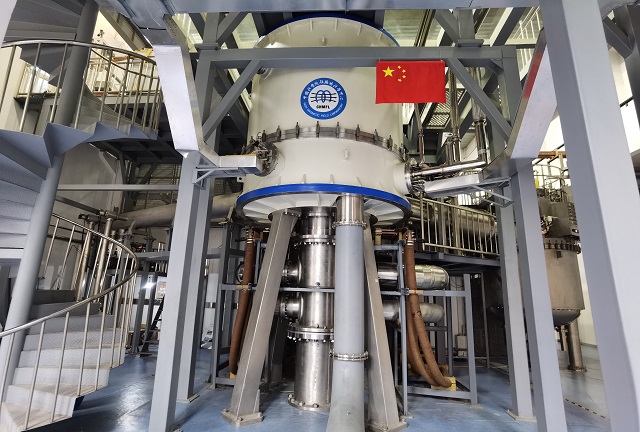
混合磁体
The hybrid magnet has two operating modes, one is a combination of 11T external superconducting magnet and 34.22T water-cooled magnet, with a room temperature aperture of 32mm, providing a maximum 45.22T magnetic field, which can be matched with a helium-3 cryogenic system (0.35K-70K, 17mm), and the measurement system has DC/AC transmission, magnetic torque, condensed matter nuclear magnetic resonance, etc. The second mode consists of a combination of an 11T external superconducting magnet and a 17T water-cooled magnet with a room temperature aperture of 148mm, providing a maximum 28T magnetic field.
-
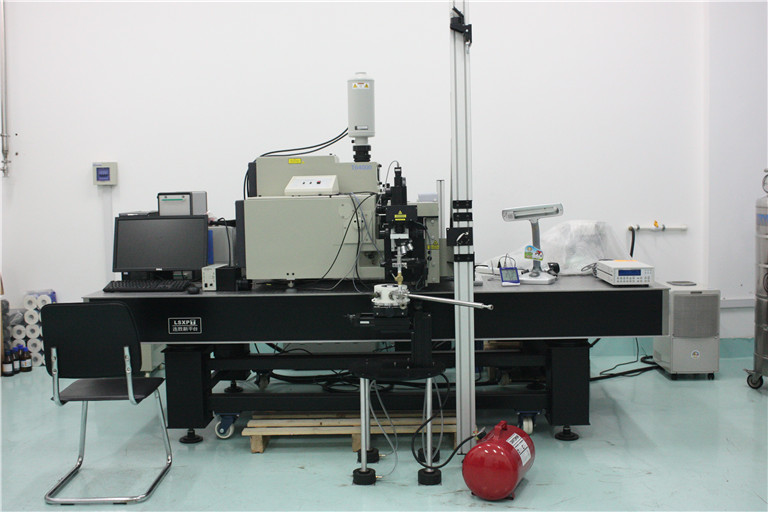
RAMAN
Functions/Applications:
The Raman effect allows fast, non-destructive chemical analysis of solids, powders, liquids, and gases. Today, Raman spectroscopy is used in many varied fields, from fundamental research through to applied solutions.
Main accessories:
Laser: Kr+-Ar+ mixed gas laser (λ=514.5nm, 647nm); Torus532 (λ=532nm)
Cryostat : Special Janis ST500 Microscopy(5K-475K)
DAC: 0-25GPa
Main technical index:
1. space resolution: 1μm
2. spectrum resolution: 1cm-1
3. spectrum range: 300nm-1050nm
4. lowest wavenumber: 5cm-1
5. wavenumber precision: 1cm-1
6. temperature range: 5K-475K
7. pressure range: 0-25GPa
Technical characteristics:
Compared to the conventional system, Using double subtractive mode can reach the lowest wave number 5cm-1 , the temperature can reach the liquid helium temperature, pressure can reach 25GPa. -
溶液环境高分辨成像系统
This equipment includes a Liquid Scanning Tunneling Microscope (L-STM) and a Liquid Atomic Force Microscope (L-AFM), which can perform atomic-resolution imaging of biological and other samples in a solution environment.
-
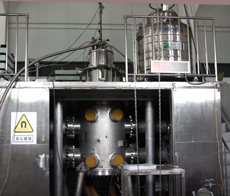
WM1(38.5T Φ32)
The water-cooled magnet wm1 has a room temperature aperture of 32mm, provides a maximum magnetic field of 42T, and can be paired with a helium-3 cryogenic system with a temperature range of 0.35K-70K and a sample cavity of 17mm. The measurement system includes DC/AC transport, magnetic torque, condensed matter nuclear magnetic resonance and so on.
-
水冷磁体WM1+凝聚态核磁共振
该水冷磁体可提供最高38.5T磁场,频率范围:5-800MHz,功率300W,温度范围0.7K-300K,样品腔直径30mm(使用He3系统时17mm)
-
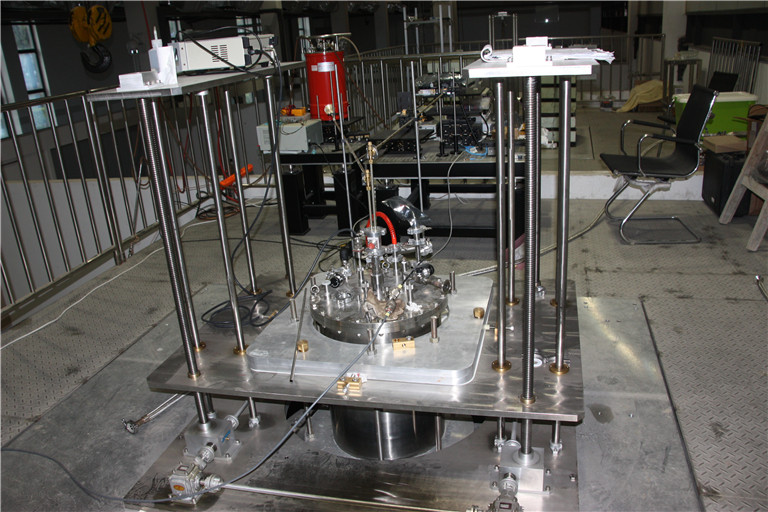
WM2(25T Φ50 EPR)
The water-cooled magnet wm2 has a room temperature aperture of 50mm, provides a maximum 25T magnetic field, and can be paired with a helium-4 cryogenic system with a temperature range of 1.8K-300K and a sample chamber of 30mm. The measurement system includes electron spin resonance (microwave frequency 82-690 GHZ (intermittent frequency), continuous wave mode, signal-to-noise ratio >1000:1), condensed matter nuclear magnetic resonance and so on.
-
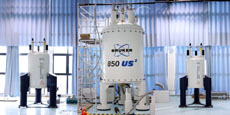
水冷磁体WM2+固体核磁共振
www
-
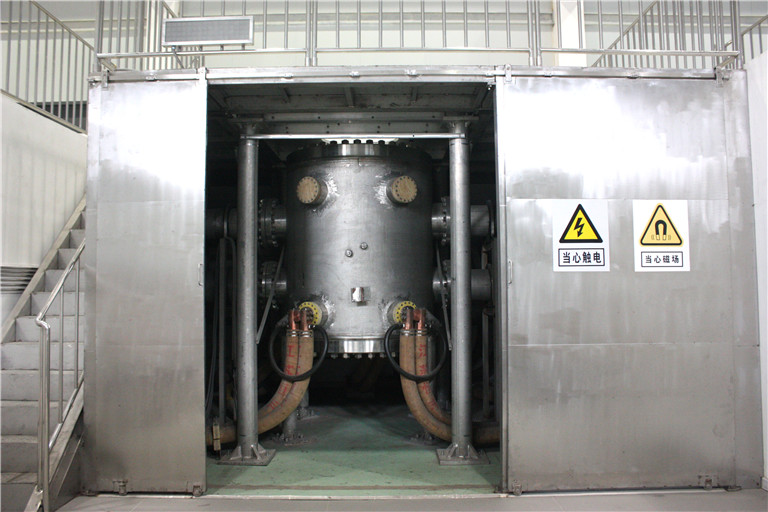
WM3(19.5T Φ200)
The water-cooled magnet wm3 has a room temperature aperture of 200mm and provides a maximum 20T magnetic field. Combined with helium-4 cryogenic system, the minimum temperature of 4.2K, can be used to test the performance of high temperature superconducting materials.
-
WM5(35T Φ50 )
The water-cooled magnet wm5 has a room temperature aperture of 50mm, provides a maximum 35T magnetic field, and can be paired with a helium-4 cryogenic system (1.8K-300K) and a helium-3 cryogenic system (0.35K-70K). The measurement system includes DC/AC transport, magnetic torque, magnetostriction, high pressure transport (30GPa, sample size 40x40x10um), DC magnetic susceptibility VSM (accuracy 0.01emu), scanning tunneling microscope STM(atomic resolution), magnetic force microscope (resolution 50 microns).
-
WM5(35T Φ50 VSM)
The water cooled magnet generates the field up to 35 T. The cryostat temperature ranges from 1.5K to 300 K with maximum sample size 6 mm.
-
FTIR
A Fourier Transform spectrometer consists of a Michelson interferometer with a moveable mirror and a broadband source. An interference pattern is obtained at each position of the mirror, and these ‘interferograms’ are combined and a Fourier transform calculated to retrieve the absorption at each wavelength. The technique is a rapid and efficient method for measuring the absorption spectra of samples, and can be used for both solid state structures and pharmaceutical samples. The DC Field Facility has installed a Bruker Vertex 80V Fourier transform infrared spectrometer for Infrared spectroscopy measurements at variable temperatures, 2K-300K, and high magnetic fields up to 35T. Absorption mechanisms associated with various excitations and collective modes in solids (phonons, electrons, spins,...) give rise to additive contributions to optical spectra and thus can be directly revealed through optical experiments.
-
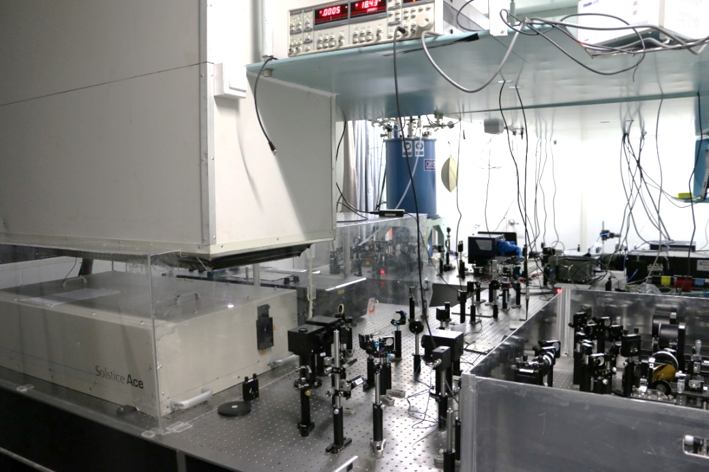
超导磁体下超快光学测试系统
1)本设备由2.54mm低温口径的超导磁体、超快飞秒激光器、多功能样品、超快光路、超快光谱探测系统组合而成。
2)基本参数:磁场强度0-7T;温度范围15-300K;光源脉宽100fs;波长260-1200nm。
3)基本功能:磁场下磁光Kerr/Faraday谱;磁场下二次谐波谱(MSHG);磁场下太赫兹时域谱(THz-TDS);磁场下光/电致发光谱。[注:以上四个功能所适用的光谱范围和磁场范围有所不同]。
4)适用样品:单晶、薄膜(要求表面平整,尺寸>2*2mm2)
NOTICE
-
Call for Proposals for HEPS Phase II Beamlines May 23,2022


